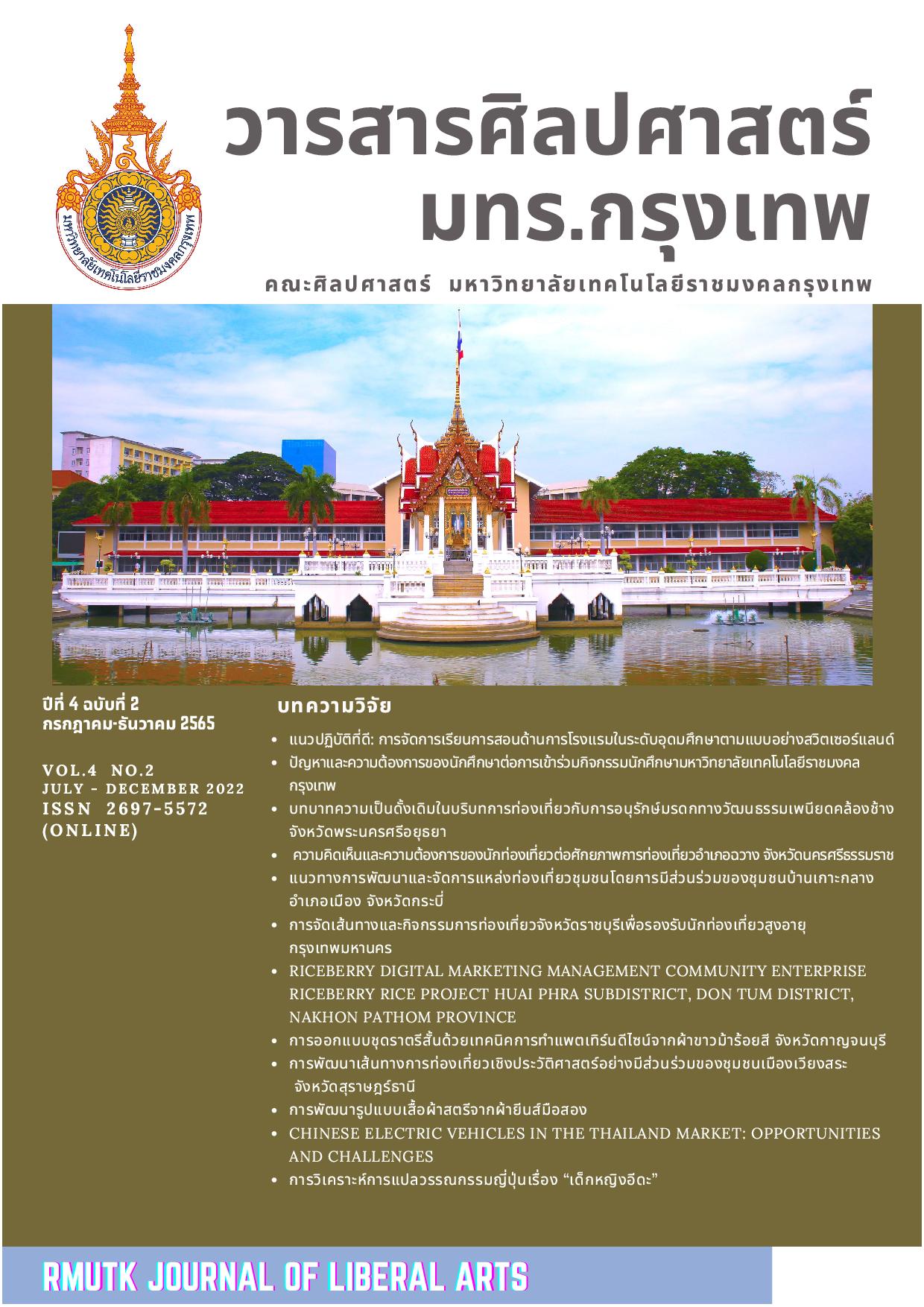AN ANALYSIS OF JAPANESE LITERATURE TRANSLATION “TWO LITTLE GIRLS CALLED IIDA” (ふたりのイーダ)
Main Article Content
Abstract
An analysis of Japanese literature translated titled “Two Little Girls Called Iida” has purposed to analyze translation work by translation study. The data was collected from the original Japanese translation of “Futari no iida” by Matsutani Miyoko and the translated version by Bhusdee Navavichit. The analysis of this translation was based on two theories of translation analysis: 1) Translation-oriented text analysis of Christiane Nord (2005) and 2) House's model of translation quality assessment of Juliane House (2001). The research findings were as follows: “Two Little Girls Called Iida” tends to be an instrumental translation rather than a documentary translation and is a literary genre that shares the characteristics of overt translation and covert translation.
Article Details

This work is licensed under a Creative Commons Attribution-NonCommercial-NoDerivatives 4.0 International License.
References
รัชนีโรจน์ กุลธำรง. (2552). ความรู้ความเข้าใจเรื่องภาษาเพื่อการแปล: จากทฤษฎีสู่การปฏิบัติ. กรุงเทพฯ: จุฬาลงกรณ์มหาวิทยาลัย.
Catford, J. C. (1965). A Linguistic Theory of Translation. London. Oxford University Press.
House, J. (2001). Translation Quality Assessment: Linguistic Description versus Social Evaluation.
Newmark, P. (1981). Approaches to Translation. Oxford: Pergamon Press.
Nord, C. (2005). Text analysis in translation: Theory, methodology, and didactic application of a model for translation-oriented text analysis (2nd edition). New York: Rodopi.
พจนานุกรมญี่ปุ่น-ไทย สมาคมส่งเสริมเทคโนโลยี (ไทย-ญี่ปุ่น). (2546). กรุงเทพฯ: ภาษาและวัฒนธรรม.
Kodansha's Compact Kanji Guide (ฉบับภาษาไทย). (2550.) กรุงเทพฯ: คิโนะคูนิยะ บุ๊คสโตร์ (ประเทศไทย)

